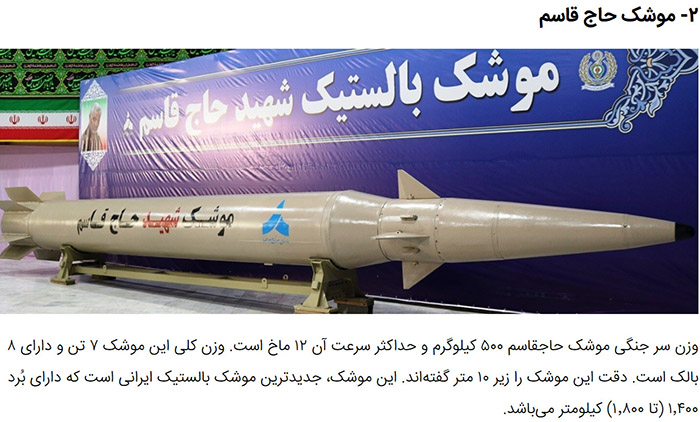The Haj Qasem missile is one of Iran’s latest and most advanced ballistic weapons, named in honor of General Qasem Soleimani. Developed to bolster the country’s long-range strike capabilities, this missile showcases a combination of precision, speed, and destructive force, making it a significant element of Iran’s growing missile arsenal.
With a range of approximately 1,400 to 1,800 kilometers, the Haj Qasem missile can cover a broad area across the Middle East and potentially beyond. Its design allows it to carry a warhead weighing 500 kilograms, providing enough explosive force to inflict substantial damage on a target. Despite its considerable payload, the missile maintains an impressive level of precision, with an accuracy estimated to be less than 10 meters.
The Haj Qasem’s total weight is approximately 7 tons, making it a robust and resilient ballistic missile. Its design incorporates eight stabilizing wings, a feature that contributes to its precision and maneuverability during the final phase of its trajectory. These design characteristics enable it to maintain a stable flight path and adjust its trajectory as needed, making it a challenging target for missile defense systems.
One of the missile’s most remarkable features is its speed. Capable of reaching a maximum velocity of Mach 12, the Haj Qasem missile is incredibly difficult to intercept, drastically reducing the response time available to defensive countermeasures. This high velocity, combined with its precision and payload, positions the Haj Qasem as a pivotal component of Iran’s deterrence and defense strategy.
In summary, the Haj Qasem missile reflects significant advances in Iran’s military technology. Its long range, precision targeting, substantial payload, and extreme speed make it one of the most formidable weapons in the region, underscoring Iran’s growing missile capabilities and strategic reach.

